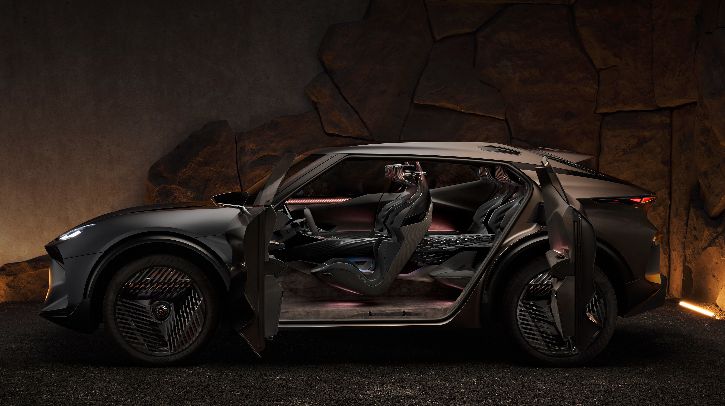Bcomp has partnered with Cupra to bring sustainable innovation to the Tindaya Concept through its bio-based composite materials. At the heart of this partnership is Bcomp’s ampliTex flax fiber, a material designed to merge high performance with environmental responsibility. AIW speaks with Nicolas Samson, sales manager at Bcomp, to explore how ampliTex is shaping the aesthetic and technical language for the future of automotive design
Can you walk us through the creative process behind integrating Bcomp’s ampliTex flax fiber material into the Cupra Tindaya Concept car?
The creative process was a true co-creation with the Cupra design team. From the start, they wanted materials that embody both performance and emotional storytelling. We worked closely with their color, material and finish (CMF) designers to select bespoke flax weaves and explore colors that could emphasize the dynamic character of the Tindaya. Thanks to our in-house weaving capabilities, we were able to create a unique aesthetic language while ensuring technical feasibility for automotive surfaces.
How do Bcomp’s materials expand the design possibilities for the interior and exterior of vehicles like the Tindaya Concept?
Flax fiber opens up a completely new palette for designers. Unlike carbon or glass fibers, flax carries a natural depth and texture that resonates with authenticity. It can be dyed, woven or hybridized to achieve different looks – from high-tech to warm and organic. For interiors, this creates opportunities to move away from cold technical finishes toward a more tactile, human experience. On the exterior, our ampliTex demonstrates that sustainability can go hand in hand with bold and futuristic design, without compromise on performance.

What are the biggest technical and scalability challenges Bcomp faces when replacing traditional materials like carbon fiber and plastics with bio-based composites in high-performance automotive applications?
The biggest challenge is always the balance between sustainability, performance and scalability. From a technical standpoint, we need to ensure that bio-based materials meet original equipment manufacturer specifications for durability, crash performance and processability. On the industrial side, scalability requires close collaboration with Tier 1s and OEMs to integrate our materials into existing production lines, while maintaining competitive cost structures. The good news is that recent nominations in series production prove that these hurdles can be overcome – and that natural fibers are ready for mainstream automotive use.
In blending natural raw materials with cutting-edge technology, how do you envision the emotional connection drivers might feel with cars like the Cupra Tindaya that embody this fusion?
We believe that materials carry emotions. When drivers enter a car like the Tindaya, they don’t just see a surface – they feel the story behind it. Flax is a plant that has been grown in Europe for centuries, yet here it is woven into the fabric of future mobility. That fusion of tradition and innovation creates a subtle but powerful connection: it reminds drivers that technology can respect nature, and that sustainability can be aspirational. It’s about making cars not only perform better, but also feel more meaningful.
Related: Kia and Bcomp collaborate to bring sustainable biomaterials to EVs



